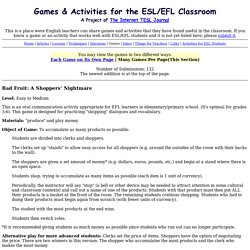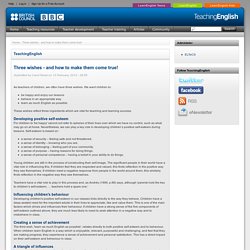

English Lessons for Kids, Preschool, Kindergarten, 1st, 2nd, 3rd Grades, ESL Kids. Fun English Games for Kids - Free Teaching Resources Online. English for Kids. The EFL Playhouse: Resources for ESL/EFL Teachers of Young Learners. English for Kids, ESL, EFL Kids, Young Learners and Beginners Resources - eslkidslab.com. English for Children. LearnEnglish Kids. Games for Learning English, Vocabulary, Grammar Games, Activities, ESL.
ESL Kids lesson plans, worksheets, flashcards, songs and games. Games to learn English - Learn English through games, On this site you can learn English grammar and vocabulary through games. Each grammar point is presented in a graphical way and then the grammar and vocabulary are practised in games. Learning basic English Learn English lessons books exercise free. Dictionary definitions you can understand - YourDictionary. Language Arts. Starters (YLE Starters) – a fun English language test for children.
Learning Chocolate - Vocabulary Learning Platform.
Fun English Games for Kids - Free Teaching Resources Online. Games & Activities for the ESL/EFL Classroom. Games & Activities for the ESL/EFL Classroom. This is a place were English teachers can share games and activities that they have found useful in the classroom.

If you know a game or an activity that works well with ESL/EFL students and it is not yet listed here, please submit it. Home | Articles | Lessons | Techniques | Questions | Games | Jokes | Things for Teachers | Links | Activities for ESL Students Number of Submissions: 132 The newest addition is at the top of the page. Bad Fruit: A Shoppers' Nightmare Level: Easy to Medium This is an oral communication activity appropriate for EFL learners in elementary/primary school.
Materials: "produce" and play money. Object of Game: To accumulate as many products as possible. Students are divided into clerks and shoppers. The clerks set up "stands" to allow easy access for all shoppers (e.g. around the outsides of the room with their backs to the wall). The shoppers are given a set amount of money* (e.g. dollars, euros, pounds, etc.) and begin at a stand where there is an open space. Multiple intelligences. Why do some students really enjoy working in groups whilst others are much more productive working alone?

Why do some learners draw pictures in their vocabulary books while others seem to need to just hear a word to be able to use it themselves? Types of intelligence Finding your strengths In the classroom Linking learners to activity types Conclusion Types of intelligence American psychologist, Howard Gardner developed a theory of Multiple Intelligences (1983) which can go some way towards explaining different learner styles. According to Gardner there are eight different types of intelligences. The eight intelligences are: Linguistic - The word player Logical / Mathematical - The questioner Visual / Spatial - The visualiser Musical - The music lover Bodily / Kinaesthetic - The mover Interpersonal - The socialiser Intrapersonal - The loner Naturalistic - The nature lover (added by Gardner at a later date) Jo Budden, British Council, Barcelona. Three wishes - and how to make them come true!
These wishes reflect three ingredients which are vital for teaching and learning success.

Developing positive self-esteemFor children to 'be happy' cannot not refer to spheres of their lives over which we have no control, such as what may go on at home. Nevertheless, we can play a key role in developing children’s positive self-esteem during lessons. Self-esteem is based on: a sense of security – feeling safe and not threatened.a sense of identity – knowing who you are.a sense of belonging – feeling part of your community.a sense of purpose – having reasons for doing things.a sense of personal competence – having a belief in your ability to do things.
Young children are still in the process of constructing their self-image. Teachers have a vital role to play in this process and, as Andrés (1999, p.88) says, although 'parents hold the key to children’s self-esteem, … teachers hold a spare one.' Three things that, in my experience, help to maximise positive influences are:
Songs. Vocabulary. Stories. Dictionaries. Carol Read: The secret of working with children. Classroom management. Songs and Chants for Children.